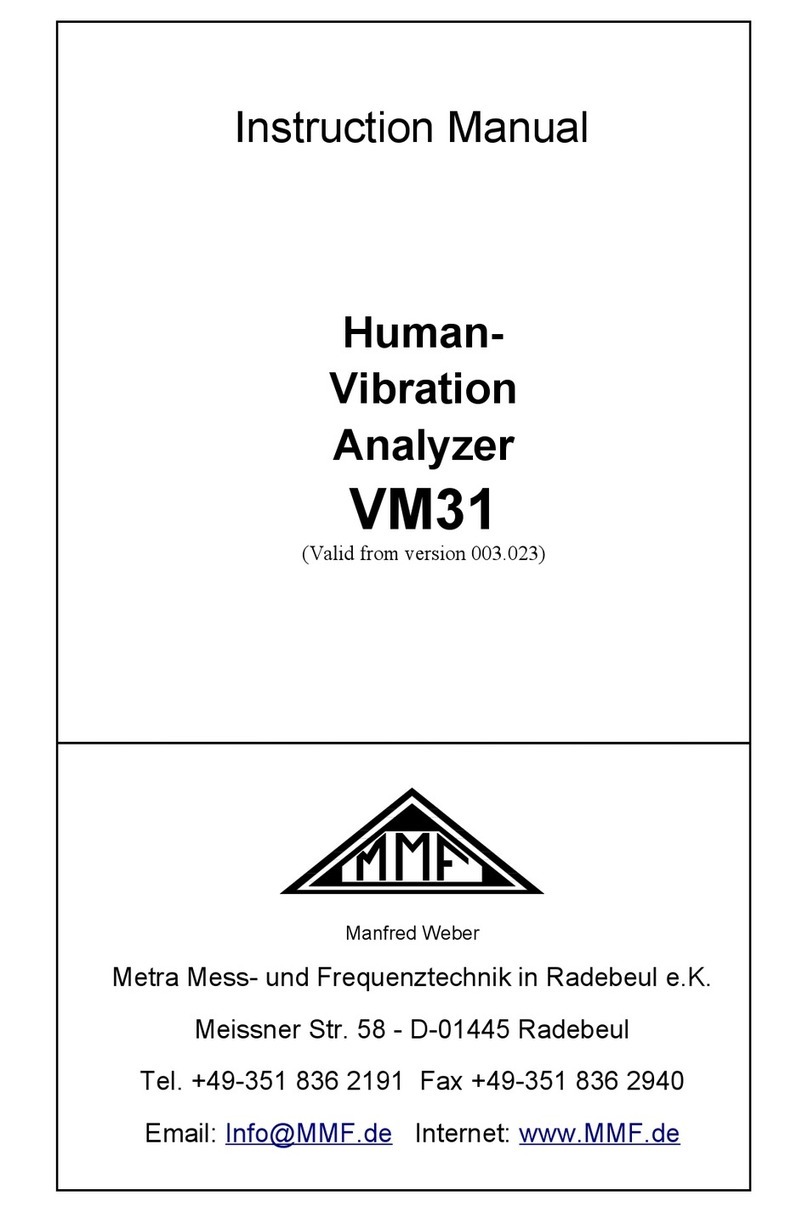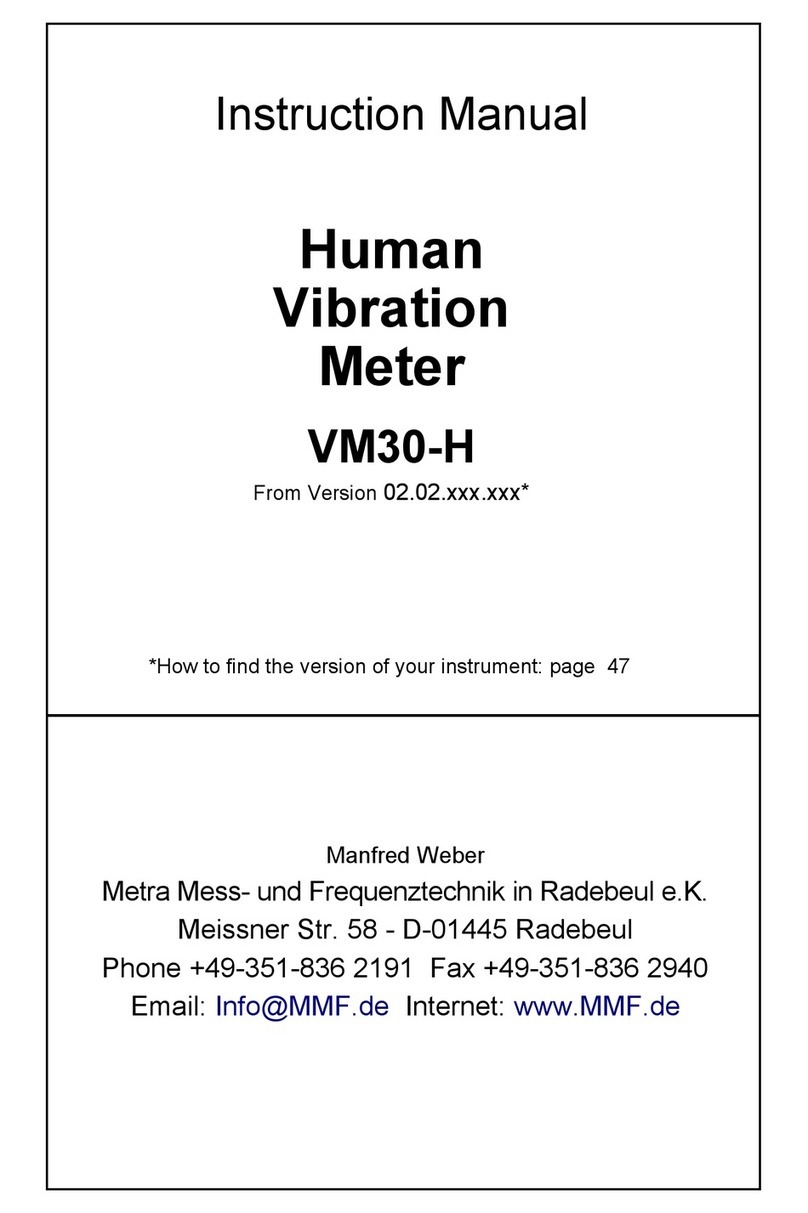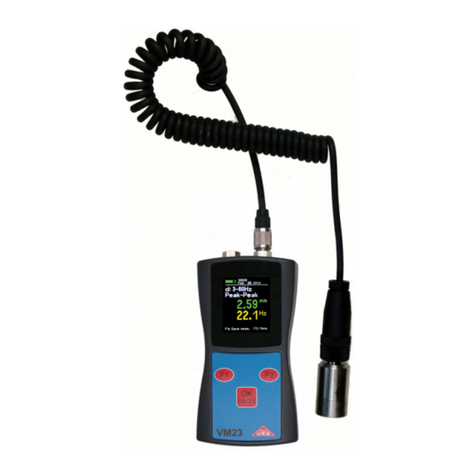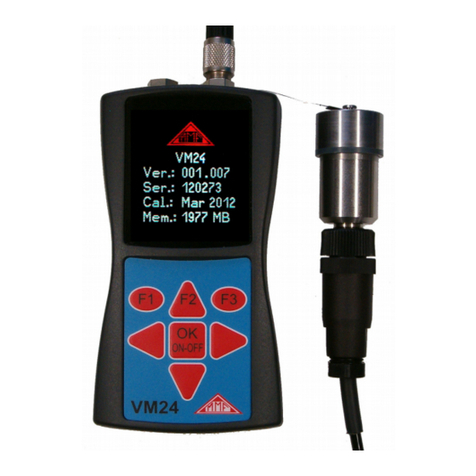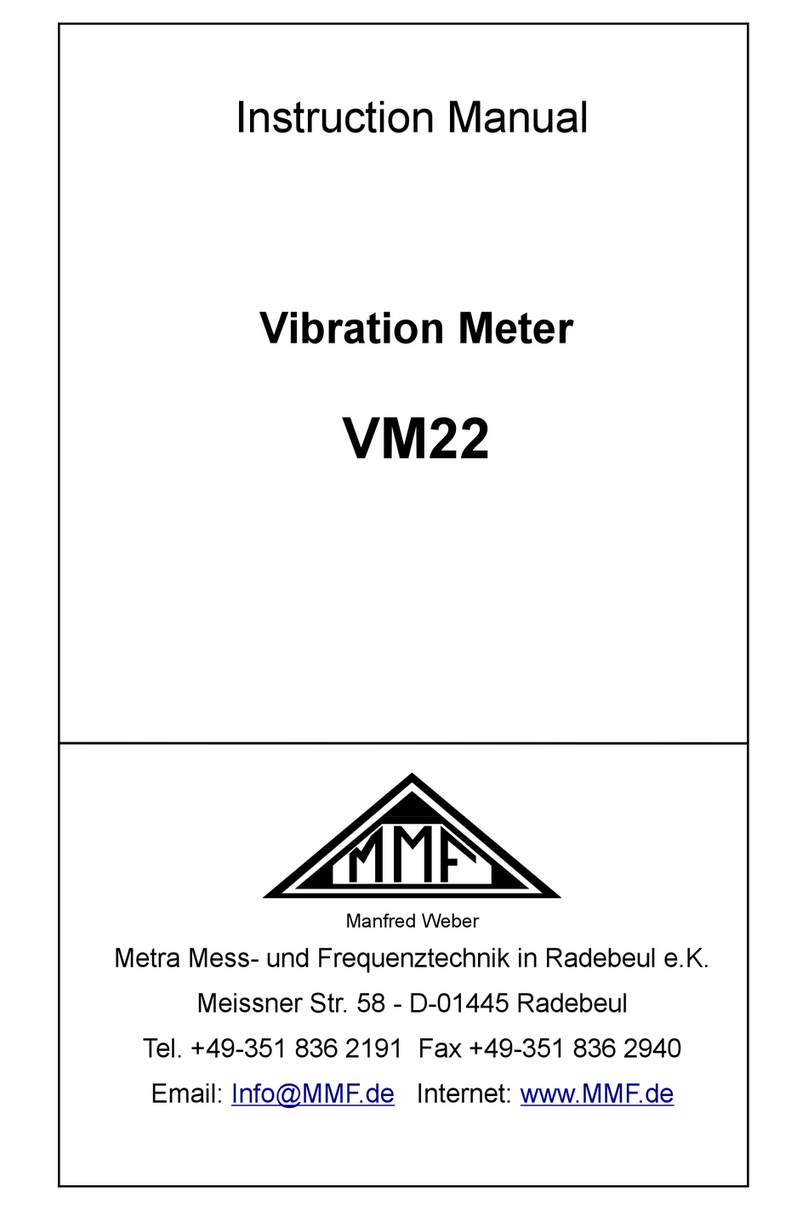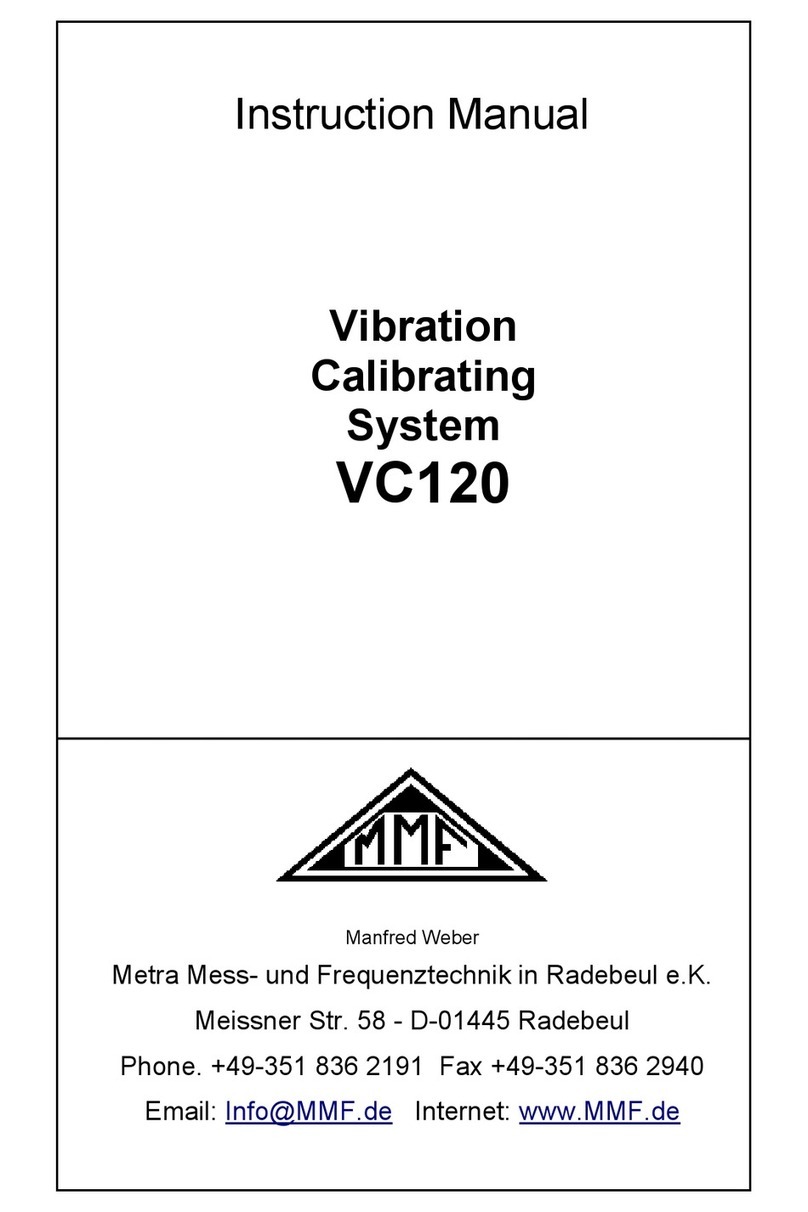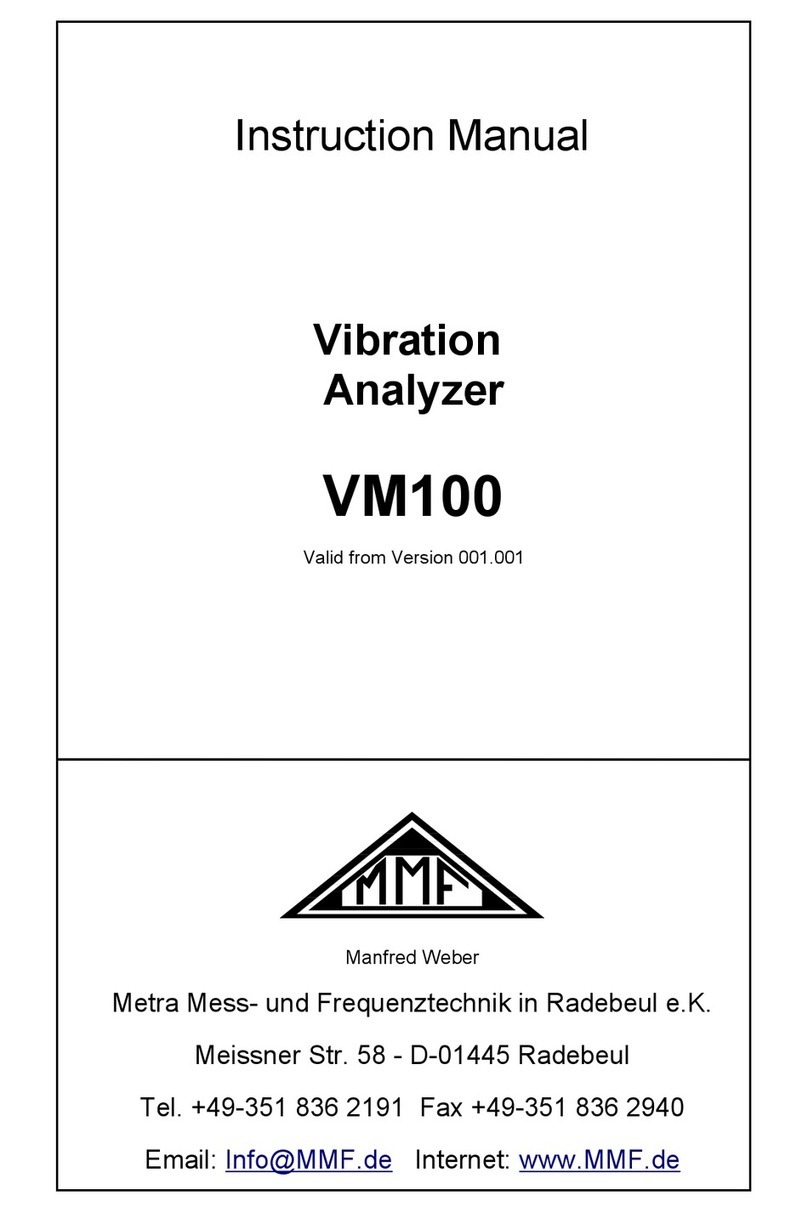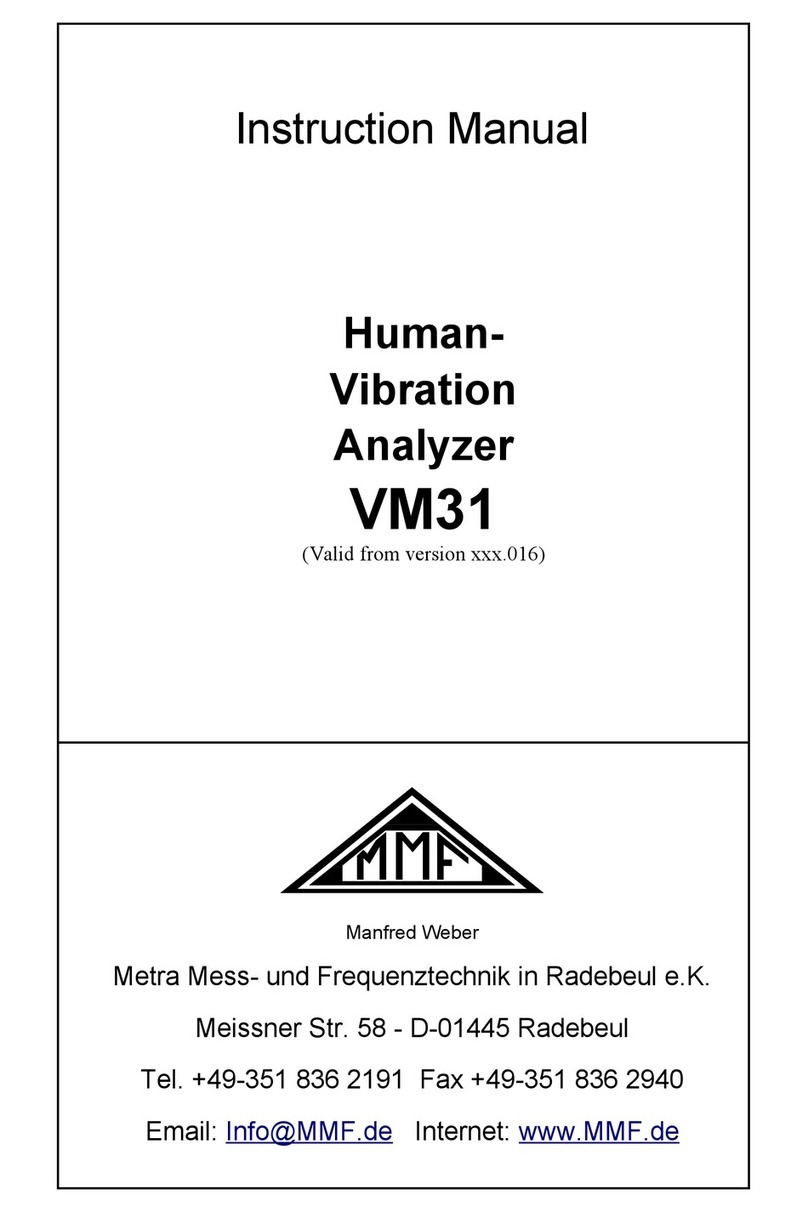Contents
. Purpose..................................................................................................................3
2. Function.................................................................................................................3
2. . The Vibration Sensor......................................................................................3
2.2. The Measuring Instrument..............................................................................4
3. Measuring Ranges.................................................................................................4
3. . Measurable Vibration Quantities....................................................................4
3.2. Vibration Acceleration....................................................................................5
3.3. Vibration Velocity...........................................................................................5
3.4. Vibration Displacement..................................................................................7
3.5. Rolling Bearing Parameters K(t)....................................................................8
3.6. Rotational Speed............................................................................................9
3.7. Temperature....................................................................................................9
4. The Batteries..........................................................................................................9
4. . Inserting the Batteries.....................................................................................9
4.2. Switching On and Off................................................................................... 0
4.3. Battery Display and Battery Type.................................................................
4.4. Shut-off Timer.............................................................................................. 2
5. Preparation of Measuring Points.......................................................................... 2
5. . General Information on Measurement Point Choice..................................... 2
5.2. ISO 08 6- Recommendations................................................................... 2
5.3. VMID Measurement Point........................................................................... 4
5.3. . How the VMID Measurement Point Functions..................................... 4
5.3.2. Mounting the VMID Measurement Point.............................................. 4
6. Measurement....................................................................................................... 5
6. . Measurement Value Display......................................................................... 5
6.2. Selecting the Display Quantity..................................................................... 5
6.3. Measurement Point Detection....................................................................... 6
6.3. . Reading the VMID Data with the VM25.............................................. 6
6.3.2. Entering the Measurement Point Text................................................... 6
6.3.3. Editing and Deleting Measurement Point Data..................................... 8
6.4. Saving Measurands....................................................................................... 8
6.5. Graphical Trend Display............................................................................... 8
6.6. Viewing Saved Measurement Values............................................................ 9
6.7. Deleting Saved Measurement Data...............................................................20
6.8. K(t) Measurement.........................................................................................20
6.9. Frequency Analysis.......................................................................................23
6.9. . Settings.................................................................................................23
6.9.2. FFT Memory.........................................................................................24
6. 0. Rotation Speed Measurement.....................................................................25
6. . Temperature Measurement..........................................................................26
7. Measurement Evaluation with Standard Values...................................................27
8. Setting the Date and Time....................................................................................29
9. Calibration...........................................................................................................30
0. Sensor Check.....................................................................................................32
. Headphone Output.............................................................................................32
2. Reset Key...........................................................................................................33












